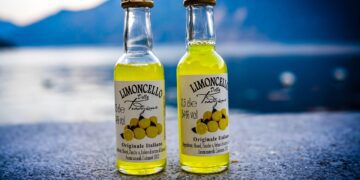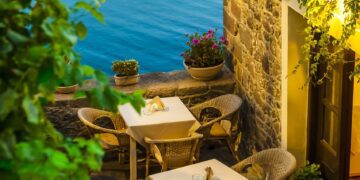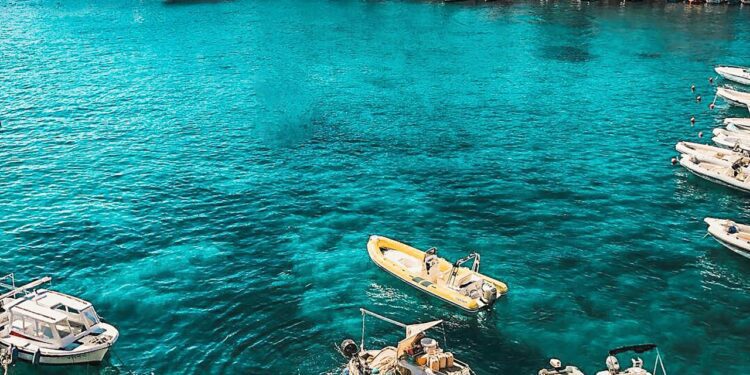Beaches So Dreamy They’ll Make You Forget Greece or Turkey
Croatia’s sun‑kissed Dalmatian coast is no longer a secret, yet one island still flies just under the mainstream radar: Hvar. Settled by the ancient Greeks, blanketed in lavender and ring‑fenced by coves that gleam like liquid sapphire, Hvar delivers a Mediterranean fantasy that rivals the Aegean or the Turquoise Coast, minus the crowds and package‑tour clichés. Below you’ll find everything you need to know to plan a beach‑first getaway that just might spoil you for Santorini or Bodrum.
Where on Earth Is Hvar?
Hvar sits in the Adriatic Sea, midway between Split and Dubrovnik, forming part of Croatia’s central Dalmatian archipelago. Fast catamarans zip across from Split up to 20 times a day in summer, covering the 37 nmi crossing in about an hour for €6‑25—cheaper and faster than most Greek island hops. Ferryhopper Car‑ferry options also link Split to Stari Grad for self‑drivers. Absolute Croatia
Beaches That Outshine the Classics
| Beach | Vibe | Why It Steals the Show |
| Dubovica | Postcard‑perfect pebble bay | Emerald shallows, a 17th‑century stone manor backdrop and snorkel‑worthy clarity. |
| Bonj ‘les Bains’ / Beach Club Hvar | Vintage glamour | 1927 white‑stone colonnades, spa cabanas and champagne service—the St‑Tropez of the Adriatic. |
| Pokonji Dol | Walkable from Hvar Town | Lively beach bars, kayak rentals and a photogenic lighthouse guarding the entrance. |
| Mekicevica & Robinson Bay | Skinny‑dip seclusion | Reachable only by a 20‑minute coastal hike or taxi‑boat; limestone shelves perfect for sun worshippers. |
| Palmizana, Mlini & Ždrilca (Pakleni Islands) | Cast‑away coves | Picture‑book turquoise, pine‑fringed picnic spots and no cars—just 15 min by water‑taxi from Hvar. |
| Lucisca Bay | Off‑grid romance | No facilities, no cell signal—just aquamarine solitude beneath fragrant macchia shrubs. |
Tip: Hire a small boat or hop a water‑taxi from Hvar Town’s harbour (pictured above) to string several coves together in a single, lazy day.
Beyond the Sand: A Living Museum
2,400‑Year‑Old Vineyards
Just outside sleepy Stari Grad lies the Stari Grad Plain, a UNESCO World Heritage cultural landscape where Greek colonists laid out a stone‑walled grid in the 4th century BC—and farmers still grow olives and Plavac Mali grapes within the exact same plots today. UNESCO World Heritage Centre
Lavender Hill Country
Hvar’s hinterland erupts in purple during June and early July, filling the air with Provence‑rivaling perfume and fuelling an annual Lavender Festival near Velo Grablje. Total Croatia Harvested blossoms become soaps, essential oils and even ice‑cream sold at local markets.
UNESCO‑Listed Traditions
Hvar isn’t just beaches; its intangible heritage includes the Za Križen (“Following the Cross”) Maundy Thursday procession and agave‑lace crafted by Benedictine nuns—both protected by UNESCO.
Historic Hvar Town
Climb the 16th‑century Fortica Španjola for sunset views over terracotta roofs and the Pakleni archipelago (see image 3), then descend to cocktail bars along the palm‑lined Riva that hum until dawn.
Practical Playbook
| Need to Know | Details |
| Best Time | May‑June & Sept‑Oct: swimming‑ready seas, fewer yachts, milder prices. July‑Aug for peak nightlife. |
| Getting There | Catamaran from Split (1 h), car‑ferry to Stari Grad (2 h), or seaplane charters. |
| Getting Around | Scooter rentals (~€35/day) for beach‑hopping, or local buses between Hvar Town, Stari Grad and Jelsa. Water‑taxis to Pakleni from €10 return. |
| Eco Etiquette | Many coves are Natura 2000 zones; take all rubbish with you and avoid anchoring over seagrass beds. |
| Where to Stay | Heritage palace hotels in Hvar Town, vineyard eco‑lodges near Jelsa, or design‑forward Maslina Resort outside Stari Grad. The Times |
Why Hvar Beats the Usual Suspects
- Water clarity: With no major rivers, the Adriatic here is incredibly transparent—visibility often 30 m+, ideal for snorkelling and free‑diving.
- Crowd factor: Even in August you can claim a private patch of pebble with a short hike or taxi‑boat.
- Value: Ferry fares, seaside dining and boutique stays still cost less than comparable hotspots in the Cyclades or Lycian Coast.
- Cultural depth: Ancient field systems, Renaissance palaces and live folk traditions add layers you rarely glimpse on purely sun‑and‑sand islands.
Ready to Trade the Aegean for Adriatic Blue?
Whether you’re seduced by Dubovica’s emerald arc, Palmizana’s yacht‑dotted lagoon or the scent of summer lavender rolling off sun‑baked hills, Hvar is poised to be Europe’s next headline‑maker. Get there before everyone else does, and don’t forget to pack reef shoes for those dreamy pebbles.
Živjeli! (That’s Croatian for “cheers!”)














